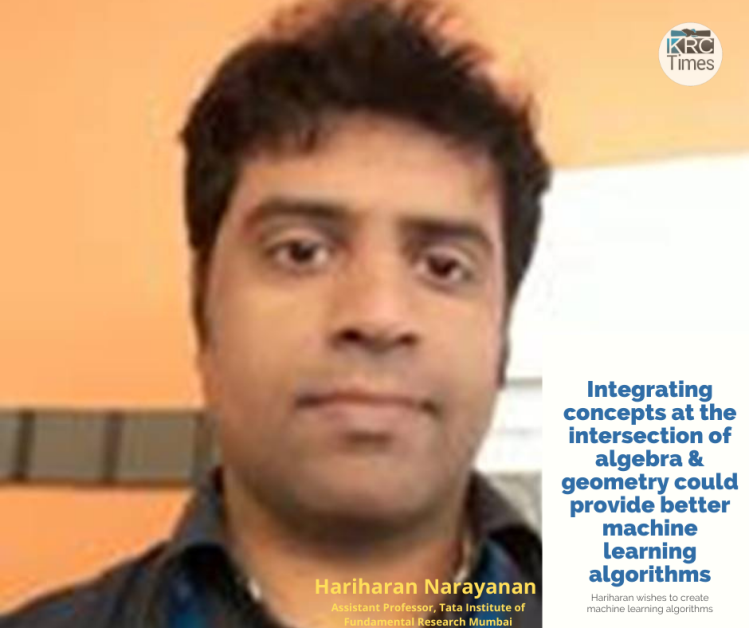This can lead to improved modelling of data arising from certain sources, such as visual observations
 KRC TIMES Education Desk
KRC TIMES Education Desk

Scientists may soon develop robust algorithms that can provide more efficient machine learning applications by focusing on concepts that lie at the intersection of algebra and geometry.
Hariharan Narayanan, Assistant Professor, Tata Institute of Fundamental Research Mumbai, a recipient of this year’s Swarna Jayanti fellowship instituted by the Department of Science & Technology, Govt. of India, wishes to create machine learning algorithms that can learn from observations and make improved predictions based on mathematical objects known as manifolds and Lie groups. This can lead to improved modelling of data arising from certain sources, such as visual observations.
Machine learning can be broadly defined as a discipline whose goal is to enable a computer to make inferences from observed data about future observations. There are two directions in which progress is crucial to make progress in machine learning. The first is making inferences from very few observations. The second is dealing with complex data, which has come to prominence through recent applications in vision, imaging like Cryo-electron Microcrope and the World Wide Web.
The use of manifolds and Lie groups can help to address both of these issues and may lead to algorithms that make better predictions in real-life applications.


